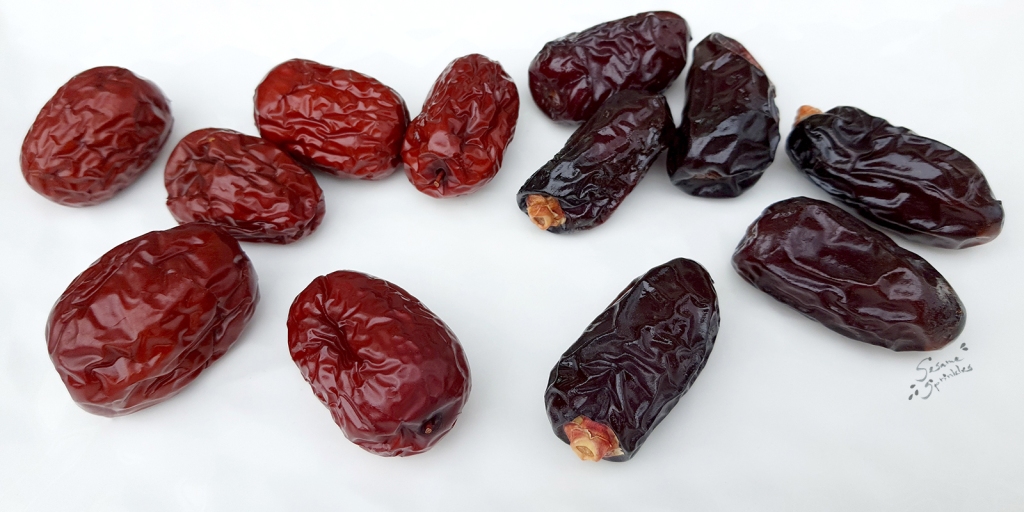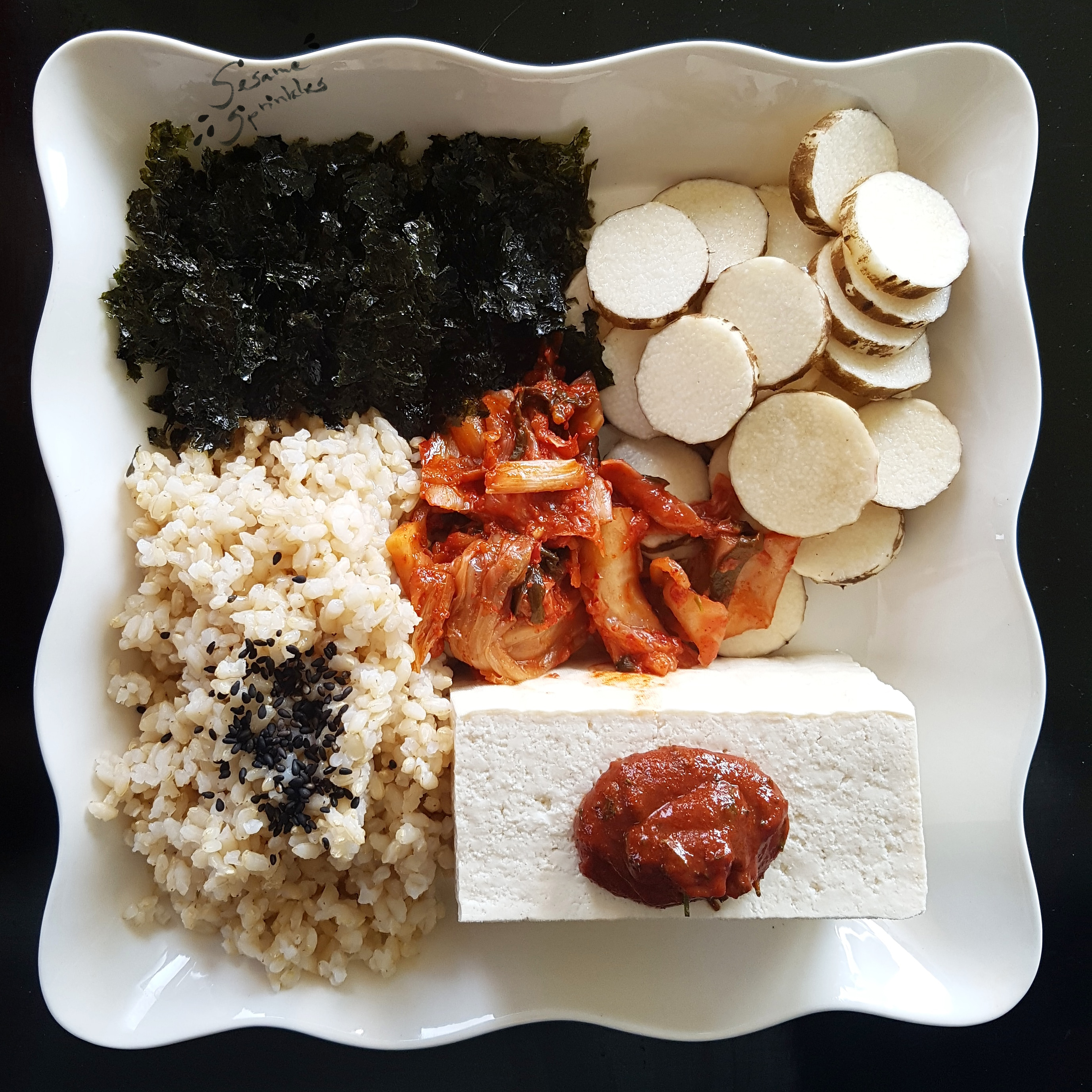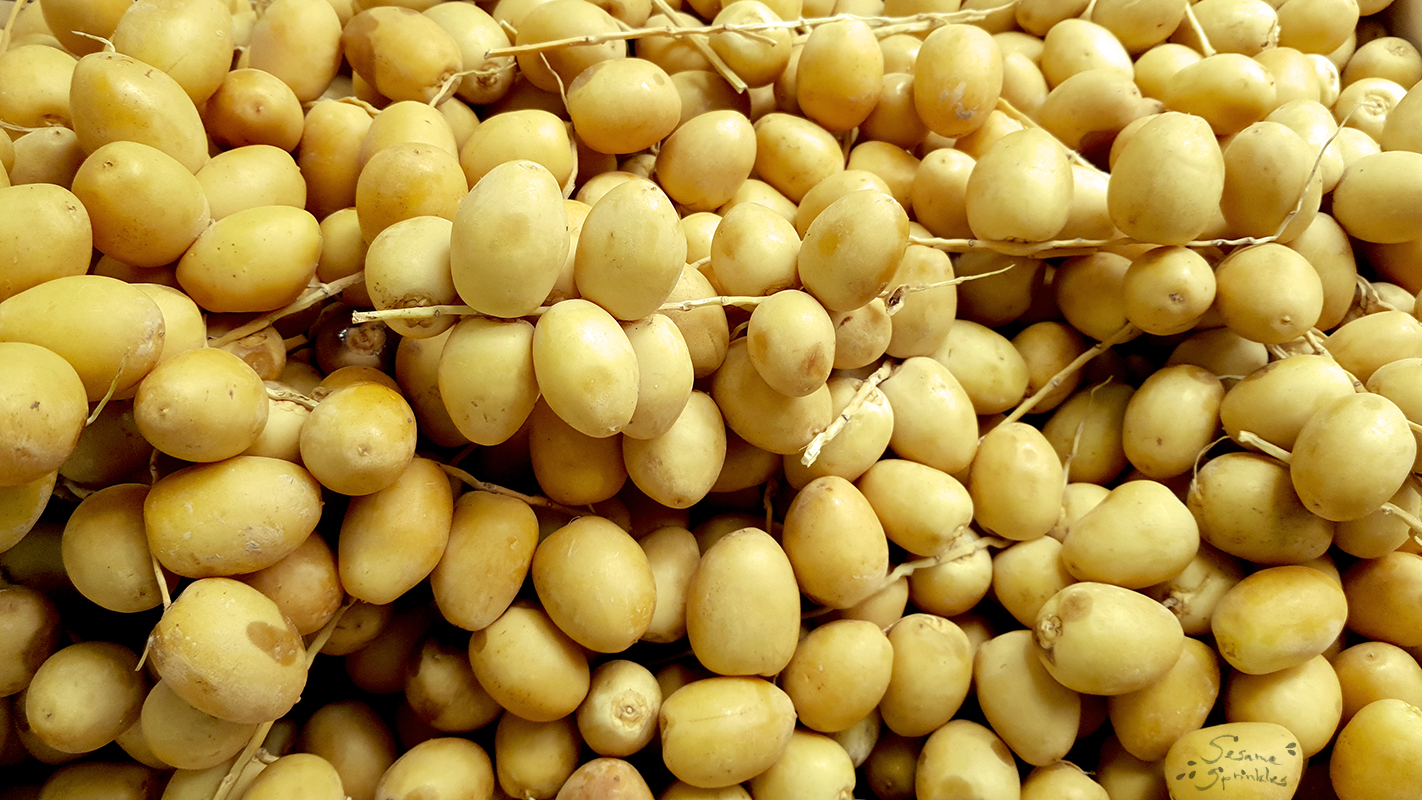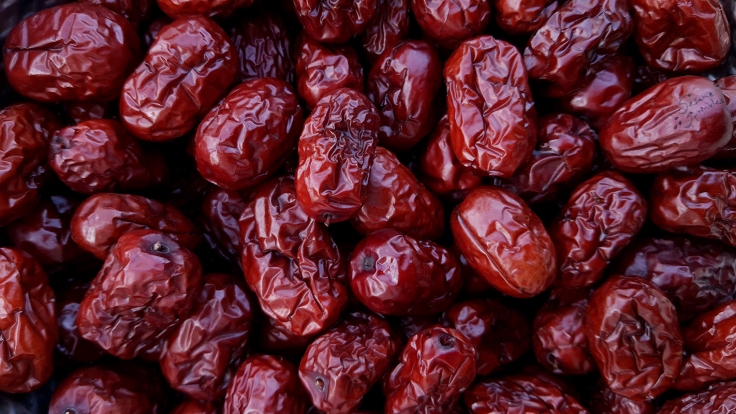If you see the title and expect info about dating, please move on. Unless you are interested in edible sweetness! Because you will be introduced to two lovely fruits! 💕

Love at first sight? 🤔
Don’t judge a book by its cover! Regardless of their dry and wrinkly appearance, these guys are very sweet! 🥰
Each one is considered a “date”, but although their appearance is similar, the two dates here come from quite different backgrounds! 🏞️🏃🏾🏜️
On first glance, they have certain things in common: They both have dark brown skin and an elliptical body. 🟤 Inside, they have brown flesh that tastes very sweet 🍬 and a hard core, one single seed. 🪨
Let’s put looks aside and get to know them better! Learn where they grew (up) and meet their family. 🗺️👨👨👦👦 See what’s inside! 💝 Find the inner strength! 💪 Compare their qualities and characteristics! 🏅
This post starts by introducing the date that is currently most widely known in the so-called Western world. 🌍 Then, you will hear about the kind of date that is the standard fruit from the East Asian perspective! 🌏 At the bottom of this post, you can find the profiles of both fruits, in which their individual traits are compared directly. 👇
Date of the date palm – Daechu Yaja 대추야자
What is commonly known as date or date palm fruit, is actually rather exotic in Korea. Koreans call these fruits daechu yaja (대추야자) which translates to “palm daechu“. [More about Daechu in the next section.] These dates are the fruits of a kind of palm tree, the so-called date palm Phoenix dactylifera, which grows in very warm climates. 🌴 Although its origins are presumably in the Middle East or western India,* it is now also planted in many other regions with similar temperatures. 🏜️ Consequently, date palms can even be seen as roadside trees in e.g. Los Angeles! 🌎



The fruits of the date palm are best enjoyable when they are dried. If you ever happen to get your hands on fresh dates, be warned not to bite into them! Fresh dates are hardly sweet and mostly astringent, aka puckery (떫다). 😖 [The strange feeling as if hair grew on your tongue! 👅 Or your mouth was drying out! 🥀] So with this kind of date, patience is key. ⏳
Unripe dates are green and hard. 🟢 Depending on the variety, ripe dates are yellow or red when they are fresh, and also hard. 🟡🔴 But dried dates have browned and softened. 🟤 Although the color changes according to its different stages, the outer skin looks initially dull and may be covered with a whitish, powdery bloom [similar to blueberries, grapes and plums]. While sometimes dried dates still have traces of this waxy protection, others develop a shiny surface which may even be sticky when they dry. [Unlike dried persimmons, the white coating is not sugar here!]

A dried date is brown – inside and outside! 🟤 In this stage, it is edible. In general, a ripe and dried date tastes very sweet, and has a dense, chewy and sticky consistency. On the outside, there is a layer of skin which is dry and brittle. It is possible but not necessary to peel the skin off before eating the date.** The flesh is lightly translucent and full of stringy but soft fibers. In the center, there is an elongate seed, which is very hard and cannot be consumed. The grayish pit is hulled in paper-like skin and it can be easily separated from the flesh. The seed has slightly rounded ends, and a ridge going lengthwise from one end to the other.


There are hundreds of date varieties, among which the internationally best known cultivars are Deglet Nour and Medjool. The color of dried dates ranges between caramel-colored yellow brown 🟡🟤 and very dark brown, some are almost black. ⚫🟤 Likewise, the size and shape also depends on the date’s variety and is either elongate or oval like a bird’s egg.
How to eat dates: Palm dates can be enjoyed in various ways. The easiest and most common way is eating the dried dates simply as they are! All you need to do is remove the seed! You can do that for instance by breaking the soft dates into half with you fingers 👌 or cutting a slit into the fruit with a knife! 🔪 Ripened and fully dried dates are delightful on their own! They are like natural sugar balls! 🍬
In several Middle Eastern cultures, dates are a traditional delicacy: Pure as well as filled, dried dates are enjoyed as sweet treats in e.g. several Arab, Turkish and Persian cuisines. [Perhaps comparable to the role of chocolate pralines in the West! 🍫] Stuffed dates, in particular, are considered an elegant dish served as a snack or for dessert. It is made by filling pitted dates with various ingredients, such as walnuts, hazelnuts, pistachios, almonds or candied orange peel. 🌰🥜🍊 Some contemporary versions of these date treats are even coated with chocolate! 🍫

Then there is date syrup, alias date nectar, date molasses, or date honey,*** which also originated in the Middle East. The thick liquid has a dark brown color and consists of nothing but pitted dates and water. It tastes very sweet and fruity and is used in cooking for sweetening and flavoring e.g. desserts and sauces. It’s also great as a vegan replacement for honey! 🌱🍯
Recently, the Western world has discovered the sweet power of dates and implemented them particularly in modern, vegan, alternative, raw or health-conscious food preparation! 👩🏼🍳🌱👨🏿🍳 Dried and pitted dates are added as a natural sweetener into smoothies, plant-based milk, (raw) baking, energy balls and other desserts. 🥤🍰🍬
Besides the flavor, dates are widely appreciated for their nutritional value. First off, dried dates have a high sugar content since 60-70% of the fruit consists of sugars, with varying amounts of fructose, glucose and sucrose! 🍬 Thus, they provide a considerable amount of caloric energy. 💪 At the same time, they are quite rich in dietary fibers (7-8%). Additionally, dates contain essential minerals and vitamins, most prominently potassium (600-700mg / 100g).****

Red date, Chinese date, jujube – Daechu 대추
This fruit is referred to by several names, its most common English names being red date, Chinese date and jujube. Also multiple scientific names have been given to the plant, but the currently valid name is Ziziphus jujuba. In fact, this plant is widely distributed in Asia and grows in regions such as India, China, Korea and Japan. Its Chinese name is hóngzǎo (红枣 / 紅棗), while in Korean it is called daechu (대추). So from the Korean perspective, it is daechu that is actually the original fruit whereas the above is just the “palm daechu” or “palm jujube”. In the text below, however, the word “jujube” is used to avoid further confusion.


The edible fruits referred to as jujube come from a deciduous tree with thorns. 🌳 The plant develops small, inconspicuous flowers, which are green and turn into green, oval fruits at the end of summer. 🍃 In Korea, fresh jujube are sold between September and October, whereas dried jujube are available all year.
Jujube can be eaten fresh as well as dried! When jujube dries, the fruit browns and becomes wrinkly, beginning with the outside skin and ending with the flesh inside.

A fresh jujube (생대추) is light green and it may have brown spots on the outside. 🟢 Initially, both the shiny skin as well as the flesh are green. But as time passes, the skin develops brown blotches which eventually cover the entire fruit. Although the exterior of fresh jujube may be brown, the inside is still green. Fresh jujube are hard to the touch and crisp, but kind of dry inside. You will sense a surprisingly dry mouthfeel, no juice but a subtle sweetness plus slightly tart flavor. Fresh jujube do not last very long and will become brownish, wrinkled, half-dried jujube within a few days. They are solely a treat of the fall season!
The fully dried jujube has a reddish brown skin that is still glossy but very wrinkly. 🔴 On the inside, however, it is light brown and has a spongy texture. 🟤 The skin is firmly attached to the flesh and cannot be peeled off. If you squeeze a dried jujube, it feels soft and springy. On top of that, dried jujube develop a distinct, sweet fragrance. Its taste is much sweeter than the fresh, green fruit. [Though not as sweet as the palm tree’s dates!] Jujube, too, has a single seed inside each fruit! The pit, which is also very hard, has a craggy surface and cannot be easily removed from the flesh. Thus, the seed needs to be cut out or bitten off while eating the fruit. Depending on the cultivar, the jujube seed is either elongate with two sharp ends or round as a ball.


Jujube exists in hundreds of cultivars. Common Korean varieties are e.g. “apple daechu” (sagwa daechu 사과대추) 🍏 and “king daechu” (wang daechu 왕대추) 🤴 which can be as large as a chicken egg! [More about naming here.] Outside of Korea, there are even more varieties, different sizes, shapes and different seed forms. In general, jujube are oval or round when fresh, but elongate and wrinkly in the dried stage.

Dried jujube are easily stored as long as they are left in a cool and dry place. Its best to store them in an airtight container, so they do not fully dehydrate and harden.

How to eat jujube: The easiest way of consuming jujube is eating them as they are, on their own. Jujube can be enjoyed both fresh and raw as well as dried. Just bite into them. You can eat the skin. But mind the seed in the center which is hard as a rock! On top of that, Korean daechu seeds have sharp, pointed tips that can prick you!
Biting into a fresh jujube like you would into a raw apple, is the best way of eating the fresh fruit! 🍏

Dried jujube, on the other hand, are consumed in a diversity of ways, including in cooking!
A typical way of consuming dried jujube in Korea is as tea, e.g. the sweet-tasting jujube tea (daechu cha 대추차) or the medicinal ssanghwa cha (쌍화차). ☕️♨️ Dried jujube is also an ingredient in warming soups 🍲♨️, as well as a topping in teas, bingsu (빙수), tteok (떡) and certain rice dishes. 🍚🍵🍧🍡 The color of dried jujube is traditionally perceived as red, and so it often acts as a colorful accent in Korean cuisine! 🔴





Another, more recent way is freeze-drying dried dates! Slices of pitted and dried jujube, which have been freeze-dried, are available on markets and in stores in Korea. They can be enjoyed like crunchy chips or sprinkled on top of desserts for garnish.
In addition to that, jujube are an important component of Korea’s culture. 🇰🇷🇰🇵 During ancestral rituals and festivals like Lunar New Year (Seollal 설날) and the harvest festival Chuseok (추석), either fresh or dried jujube are one of the foods that are put on the offering table. 🎑 At a traditional Korean wedding, there is a ceremony during which bride and groom have to catch dried jujube and chestnuts together. 🍒🌰 Here, the number of caught jujube represents the sons the married couple will bear, while chestnuts symbolize the birth of daughters. 👩👦👦👨👧👧


Last but not least, jujube has medicinal significance in Korea. In so-called Traditional Chinese Medicine (hanyak 한약 韓藥), which has been practiced in Korea for centuries, jujube is ascribed medicinal properties. 💊 Generally, jujube is supposed to have a soothing effect on the throat and is therefore a common household remedy against cough and colds. 🤧🤒 In other words, jujube is also valued for its health benefits and added to dishes and drinks to strengthen the body. That’s why all kinds of “health food” (boyangsik 보양식) feature jujube, e.g. nutritional rice cakes (yeongyang-tteok 영양떡) and medicinal rice (yakbap 약밥); and why hot teas with jujube are especially popular during the cold season. 🍂☃️🧣


Regarding its nutritional content, dried jujube contains mostly sugar. In fact, more than 70% of the fruit is some kind of sugar such as fructose, glucose and sucrose! 🍬 The fiber content of jujube being 6% is a little bit lower than fruits of the date palm. Apart from that, dried jujube has a remarkably high content of iron (5.09mg / 100g) and manganese (31.1mg / 100g).*****

End of the Love Story?
Depending on your perspective and personal background, one is considered the “original date” and the other referred to as the “red-colored date”. Vice versa, there is an “original daechu“, while the other fruit is the “daechu of the palm tree”. [Like many things in life, it’s a question of perspective! 🙃]
After all, these two dates (or daechu) are very different from each other! The similar names are confusing and suggest a relationship, although they are not botanical cousins or closely related at all. What is more, they even live in different climates! It is only coincidence that they are both brown-skinned, sweet and hard-core(d)!
Notice that the fruit of the date palm may not be a pleasant date at the beginning because he needs the chance to soften and loosen up. Likewise, the red date, alias jujube or daechu, will appear stiff and dry at first, but he becomes sweeter the more time you spend with him! 😉
I don’t know about you, but for me, it was definitely love at first bite! 😍
Are you ready for a date, now? Which one would you choose? CAN you actually choose one over the other??? They both deserve Love! ❤️🤤🤎
No matter which one you may select as your favorite date, this is guaranteed:
You’re destined to have a sweet time together. 🥰

Direct comparison of dates and daechu (jujube)
| Name | date, palm date, yaja daechu 야자대추 | red date, jujube, daechu 대추 |
| color – unripe | green 🟢 | green 🟢 |
| color – ripe and fresh | yellow 🟡 / red 🔴 | green 🟢 / red-brown 🔴🟤 |
| color – ripe and dried | yellow-brown 🟡🟤 / dark brown ⚫🟤 | red-brown 🔴🟤 |
| consistency & taste – fresh | crisp astringent, lightly sweet | crisp lightly sweet, lightly tart |
| consistency & taste – dried | dense, chewy very sweet | soft, spongy sweet |
| shape | elliptical / egg-shaped | elliptical / ball-shaped |
| skin | dull / white powder (fresh) shiny & sticky (dried) can be removed | shiny and glossy (fresh / dried) very wrinkly (dried) cannot be removed |
| seed | elongate lengthwise ridge somewhat rounded ends easily removed | elongate or round fissured surface sharp, pointed tips not easily removed |
| plant | palm tree 🌴 warm climate | deciduous tree 🌳 moderate to warm climate |
| nutritional value | 277-282 cal / 1160-1180 kJ (per 100g) | 281 cal / 1180 kJ (per 100g) |
.
.
Additional notes from the author
*) The origin of the date palm is much debated and there are various sources stating different regions. For more information compare the sources listed on Wikipedia.
**) There is an Egyptian story in which dried dates are offered as an appetizer. A greedy host lets the guest wait, until the guest begins to peel the dates before eating them. For the host, this is the sign that the guest is not hungry anymore and finally serves the main course. [Need to find the name of the story.]
***) Alternative names in other languages: Arabic – debes دِبس | Hebrew – silan סילאן | Persian – شیره خرما
****) Source: Data profiles of dried date cultivars Deglet Noor and Medjool from USDA FoodData Central.
*****) Source: Data profile of dried jujube from USDA FoodData Central.



















